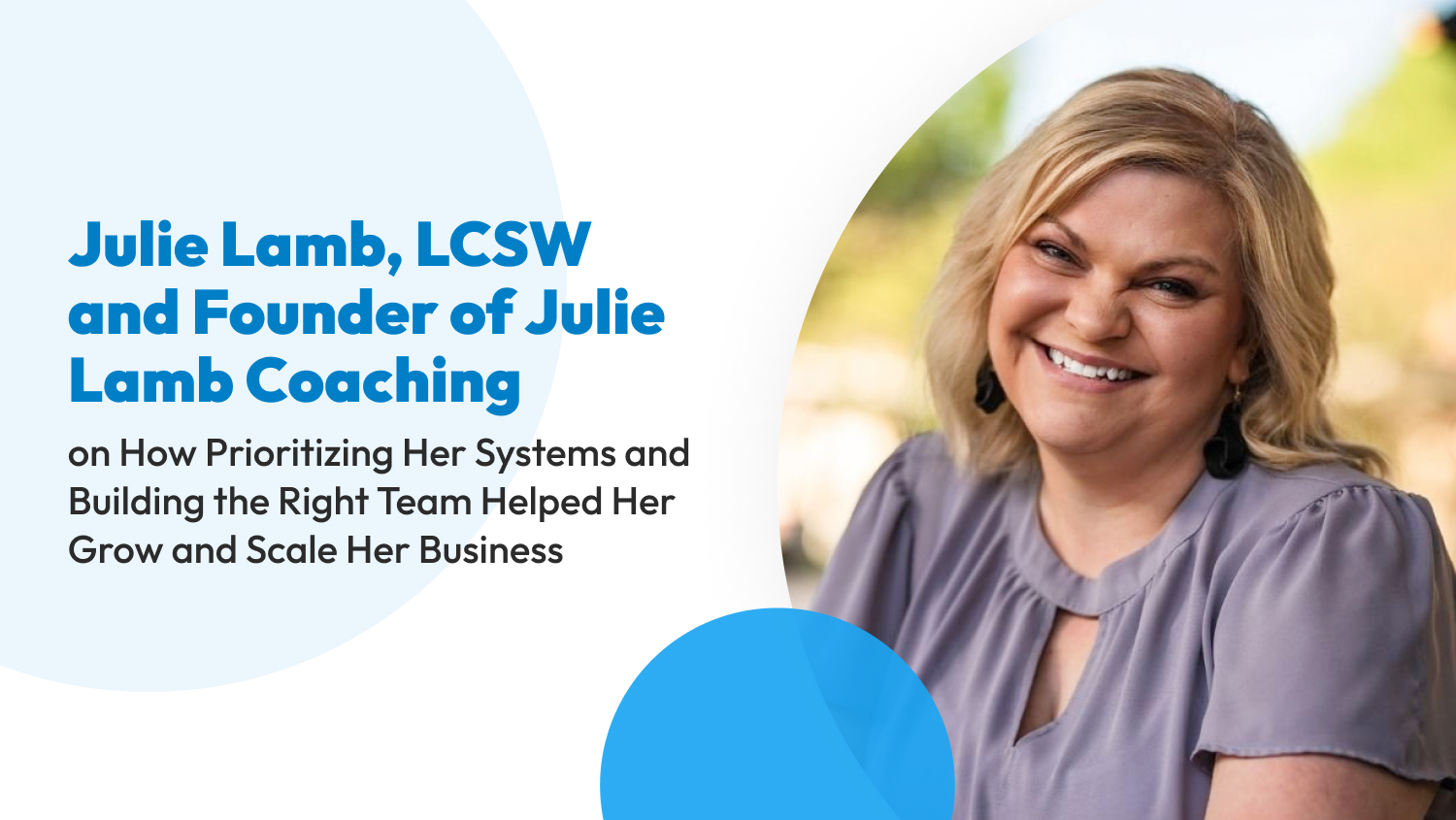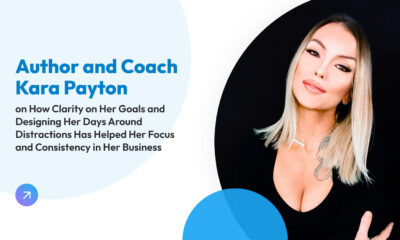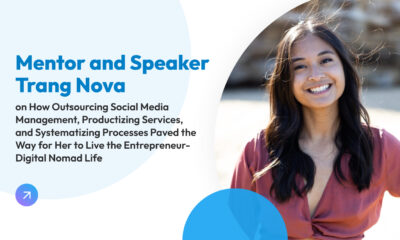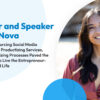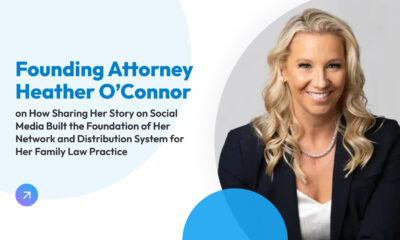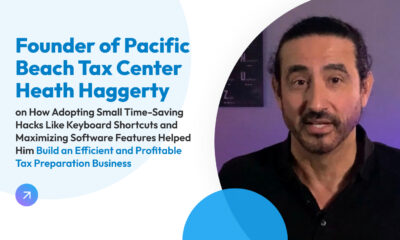Case Study
Julie Lamb, LCSW and Founder of Julie Lamb Coaching on How Prioritizing Her Systems and Building the Right Team Helped Her Grow and Scale Her Business
Julie Lamb used to work a demanding therapy job at a non-profit, with long hours and a lot of travel. It was a lot to handle when she had her first daughter, and she had to quit altogether and be a stay-at-home mom by the time she had her second baby. But just a couple of years into this massive change in her life, she started to feel the urge to work again and to help people professionally as she used to.
In this article, we look at Lamb’s journey from full-time mom to mindset and strategy coach and business owner. She shares with us the people, systems, and tools that helped her overcome the challenges starting, growing, and scaling her business. Don’t forget to check out her Productivity Quick Stack Reference and her Reading List at the end of the article.
Table of Contents
- Starting
- Growing
- Scaling and Success
- Other Recommended Tools
- Hindsight: What Lamb would have done differently
- Wrap Up
- Lamb’s Reading List
- Lamb’s Productivity Stack Quick Reference
- More About Julie Lamb
Starting
Challenge 1: From therapist to coach: Figuring out her niche
Lamb struggled with being a stay-at-home mom and just knew it wasn’t for her. Fortunately, she met some business owners at a local conference for social workers who inspired her to start a private practice. She thought, “This is something that I can do. This is something I want to do. And I have the skills and the abilities to kind of figure it out.”
So while her kids were still small she took the leap and set up a brick-and-mortar therapy practice. She recalls, “When you open a business like that, it takes a lot of dedication, a lot of time, a lot of hours to get it going. And I was getting frustrated because I felt like to get my business going, I had to just accept anybody that walked in the door. I was overextending myself is basically what that looked like.”
How did she overcome this challenge of finding a niche that would inspire and energize her?
Solution: As she continued to see clients, Lamb started paying attention to her style as a therapist, what she is good at, and who she enjoyed helping. She tells us, “I’ve always been one of the therapists that’s like, ‘This is what you’ve experienced. Now how do we move forward?’”
She specifically wanted to work with people who wanted to change and who were willing to do the work to move past their challenging situation. And she found this in her clients from the corporate world and the entrepreneurs who were struggling with imposter syndrome and perfectionism.
Lamb noticed too that because of her therapy background, she was good at helping them deal with these types of problems. “I was really good at noticing the strategy that they needed to put into place. I was really good at noticing the mindset that was stopping them from getting where they wanted to go. My therapy background made it so that I could get to that more quickly and then help them move along faster.”
Soon, she started seeing burnout as another common struggle among corporates and entrepreneurs. She thought to herself, “I can help here [too], and this actually aligns with where I was seeing my practice move ahead anyway.” And so in June 2019, she launched Julie Lamb Coaching, focusing on mindset and strategy coaching for executives and entrepreneurs.
People: Lamb
Systems: Focusing on what she enjoyed as well as what she excelled at
Tools: Google Calendar, Apple Calendar, Email
Challenge 2: Distribution: How she found her first clients
With the decision to pivot to coaching, she needed to market herself differently to reach this new target market. How did Lamb promote herself to get those first bookings as a mindset and strategy coach?
Solution: She found her first clients from virtual and in-person networking events. “You have to be willing to put yourself out there. You have to talk to real humans.”
She knew from experience with her therapy practice that putting your name on an online directory isn’t enough, so she worked on broadening her online presence. She set up accounts on Twitter, Pinterest, LinkedIn, Facebook, Instagram, Google Business, and Yelp and worked on her website SEO. “Once I connected the dots between social media, website, and my in-person [networking], that’s when my business truly exploded because I was out there.”
She eventually focused on her website, Instagram and Facebook as her main online marketing channels. In addition, she gets a steady stream of referrals from past or existing clients.
People: Lamb
Systems: Networking, online marketing through social media and website, website SEO
Tools: Twitter, LinkedIn, Facebook, Instagram, Pinterest, Google Business Profile, Yelp, Squarespace
Growing
Challenge 3: Delegation: Building her team
As she built her client base, Lamb looked for help to free up time and mental space so she could work in and on her business. She had a young family and a husband who worked full time, so aside from the demands of her business, childcare and housekeeping were immediate priorities.
Solution: Lamb gave herself permission to hire somebody to watch her children and eventually to help keep the house in order. She shares, “For many solopreneurs out there, when we first start, we discount some of [our] basic team members. So my actual first team member was a nanny. She was phenomenal with my kids, which gave me the courage to build my business. My next hire was actually my housekeeper, who took so much off my plate that I was able to then free my brain up.”
People: Lamb, nanny, housekeeper
Systems: Outsourcing home and family-related tasks
Tools: Job board or websites/online platform for childcare and housekeeping services
Challenge 4: Recovering from a bad hire and going back to basic systems and tools
With her home responsibilities taken care of, Lamb decided her next hire would be someone to work on aspects of her business that she did not like – technology. “Everything tech scared me. So unfortunately, I made the first big mistake in my business by hiring somebody to take over the part I didn’t like, the part that I didn’t understand basically.”
She hired a virtual assistant recommended by friends and made the second mistake of not going through a proper vetting process. She gave her new hire free rein to build her tech stack, and she spent a lot of money on complex and expensive tools she didn’t need or understand.
Lamb recalls, “All it did was actually make my job worse because suddenly I not only didn’t know what was going on inside my business, but I was also trying to still work outside my business. [The VA] made a really fatal error that made me end that relationship. I’m going to say my business was burned to the ground, and I had to restart everything. When a VA sends out your passwords to everything, that’s a bad thing.”
Solution: After letting this tech VA go, Lamb had to go back to basics. She reviewed her systems, figured out the bare minimum she needed for her business, and rebuilt from there. At that point, she decided all she needed was a website, an email campaign tool, and a scheduling tool.
She already had her Squarespace website that worked well, and she was fairly comfortable with managing the backend of it. She knew she didn’t need ClickFunnels for her email marketing; she wanted the easiest tool to use, so she tried a few (MailChimp, MailerLite, ActiveCampaign) before deciding on ConvertKit. To streamline her scheduling, she chose Acuity, which automatically sends email reminders and meeting links, eliminating her problem of clients missing appointments.
This near-catastrophic experience with outsourcing her systems taught her to continuously reassess how well her tools and tech stack serve her. “Every year, I take a look at all my systems. Are they working? Is this still what I need? That’s what I tell my clients [too], there are so many options out there for you. You have to find what works for you because that’s how you’re going to be able to move your business forward.”
People: Lamb
Systems: Having systems in place, and understanding your tech requirements before delegating or outsourcing, taking the time to test new tools to see if they meet your requirements, regular auditing of tech stack to make sure they still suit business needs
Tools: Squarespace, Instagram, Facebook, ConvertKit, Acuity Scheduling
Scaling & Success
Challenge 5: Delegation: Building her team the right way
Lamb went solo for a long time after the disastrous tech VA hire. But when she wanted to launch a podcast and rebrand her business, she knew she needed support.
Solution: She recalls, “My next hire was very, very deliberate, and I had tests that they had to go through before I hired them.”
She had produced a lot of content for podcasting at this point, and she wanted a podcast manager to get the material ready for release. When she asked the podcast manager candidate to fix something her last VA had messed up, she was pleasantly surprised by his response. “This person came back and said, ‘I would love to tell you I can, but I can’t. I could bill you all of this money for this, but it’s not going to get you anywhere. Let me tell you what could work.’”
The fact that the candidate was honest, brainstormed alternative solutions with her, and finally gave her a sample output that exceeded her expectations sealed the deal. It was a bonus that he was a family friend and she could help out with this job opportunity.
Her next hire was a rebranding manager, now her social media manager, who was also very proactive and frank about what wasn’t working and what she thought Lamb could do better. Then she brought her husband on board to handle the tech side of her campaigns. They had to agree on some very clear boundaries, but this arrangement worked out well for them.
Lamb counts one more person as part of her team: her personal coach. She may not be working in the business, but she empowers Lamb to show up at her best for her clients. Lamb explains, “She’s the one that helps me to clear out my brain so that I can help clear out other people’s brains.”
Lamb first met her as a guest coach at a program she was enrolled in, and she felt they might be a good fit. Like her hires for her business, she does thorough vetting for her own personal coaches. “This is an investment, and you want to make sure this is really what’s going to help you get to the next phase of your business and your life.”
People: Lamb, her husband, podcast manager, social media manager, personal coach
Systems: Thorough vetting and screening of potential hires or additions to her personal and business teams, getting referrals from family and network
Tools: LinkedIn, job boards, email
Challenge 6: Time and energy management: Dealing with burning out in your own business
Even though Lamb had built a great support team, she hadn’t figured out how to set boundaries with client work. She kept saying yes to clients and their preferred schedules, and one day just realized she was barely keeping her head above water managing over 30 clients. She didn’t even take lunch breaks because “Who had time for anything?”
Lamb found herself resenting her business as her well-being and her family suffered. “And that actually led me to burn out of my own business where I was like, ‘I can’t do this anymore.’”
Solution: Lamb realized she needed to recognize and work with her energy needs. She knew client work energized her but only for short periods, so she tried building her schedule that way. When she noticed she wasn’t focusing well with short hours for client sessions, she tested longer client days, which turned out great for her.
Today, her week looks like this: Mondays, Wednesdays, and Fridays are for client sessions, while Tuesdays and Thursdays are for CEO, COO, and CFO work, which includes content creation, billing or accounting tasks, and reviews of business systems and processes.
These theme days are flexible, especially Fridays, which she can carve out for family time. During client days, she can also set time blocks for CEO or CFO tasks. Occasionally, she accommodates clients on Tuesdays or Thursdays, but always only to the extent that it works well with how she wants to spend her energy. For example, she would accommodate them only in the afternoons, or she could make an exception for a client to meet at 6 AM.
She emphasized one critical element in her scheduling – and that is to build in time off in her calendar. That includes lunch breaks, no-work evenings, half-day Fridays, time with kids, and days off for vacation. Personal and rest time help her recover energy to focus and be productive during dedicated work hours.
With set days and hours for client work, Lamb learned to limit the total number of clients she takes on and to get comfortable having a waitlist. She shares, “I’ve noticed that as I have prioritized those things, my business flows and clients continue to come because I’m at my best self. And when I’m at my best self, clients know that, and then they want to continue to work to get to their best self as well.”
People: Lamb, husband, social media manager, podcast manager
Systems: Theme days, time blocking, scheduling breaks and time off
Tools: Google Calendar, Apple Calendar
Challenge 7: Finding tools that work for communicating with her clients in between sessions
As Lamb settled into a more sustainable schedule for client work, she made it so that she met with each client on the same day and time every week. But sometimes, clients would request to meet every other week or every third week. She knew they needed support and some way to hear from her in between sessions. She looked for the right communication tools that would meet her clients’ needs and preferences.
Solution: She tested Slack, Voxer, Gmail, and even Zoom. They could leave her messages on these apps, and she would get back to them in 24 hours. For the most part, clients didn’t like Slack because it reminded them too much of office communications or it felt like “just one more thing to do.” However, she found that many adolescent clients like Voxer and others like Gmail.
Eventually, she refined these in-between-session communications to align them with each client’s coaching goal. While they could use Voxer or Gmail to send her a rant or an update on something significant going on with them, she would always respond in a way that empowers the client or prepares them for the next coaching session.
People: Lamb, coaching clients
Systems: Providing low-touch support to clients that prepare them for the next session
Other Recommended Tools
Lamb shares with us a few other tools she has in her tech stack. Now that her business is bigger she has started using Trello and Asana. She uses Dropbox for handling podcast files and DropboxSign (formerly HelloSign) for handling contracts. She likes to get tools that integrate easily together if possible.
Hindsight: What Lamb would have done differently
Looking back on her traumatic experience with her tech VA, Lamb has learned a couple of lessons on what she should have done differently in terms of tool selection and hiring.
The first is to have your systems in place and know what you need before investing in any tools. People may pressure you into buying certain software, but only you would know if it’s a great fit for what your business needs. The second is to conduct your own vetting process for anyone you bring to your team. Don’t rely on friends’ recommendations alone.
Both mean you have to spend more time testing, researching, and vetting, but it is a necessary step to ensure you are building a tech stack and a team that will actually support and not get in the way of your business.
Wrap Up
Lamb’s story shows how crucial properly set up system and tools, and a solid team are for a startup business. Even though at first she thought technology was scary, her experience with the tech VA taught her that she can figure it out and that she needed to take charge of her systems and tools. Now she teaches her coaching clients to do the same.
We also learned from Lamb about expanding our notion of who our team is — those who help us with household responsibilities and who take care of our mental health are also part of the support system that helps us to succeed. And when selecting new hires, it’s not just about screening for skills, the elements of fit with your preference and style as well as trustworthiness also need to be considered.
Today, in addition to one-on-one coaching, Lamb also offers consulting services for corporate wellness and mental health initiatives, keynote speeches, and workshops. If you would like to learn more about her approach to coaching, you can tune in to her podcast, “What the Hell is My Brain Doing?” In each weekly episode, she puts on her therapist hat to talk about why we think and behave in certain ways, tips and tricks to help us understand ourselves better, and how to work towards personal development.
Lamb’s Reading List
- Essentialism: The Disciplined Pursuit of Less by Greg McKeown, which taught her to examine what she really needed in her business on a day-to-day basis
- The Big Leap: Conquer Your Hidden Fear and Take Life to the Next Level by Dr. Gay Hendricks helped her get out of her own head and realize her zone of genius
Lamb’s Productivity Stack Quick Reference
Starting
- Google Calendar
- Apple Calendar
- Gmail
- Google Business Profile
- Yelp
- Squarespace
Growing
- Job board or websites/online platform for childcare and housekeeping services
- Squarespace
- ConvertKit
- Acuity Scheduling
Scaling & Success
More About Julie Lamb
Julie Lamb, LCSW & MSW, is a respected authority in the Texas region in the field of mental health and productivity with a nearly 20-year career spanning both public and private sectors.
Julie has a gift for unlocking the mental and emotional roadblocks that prevent people from becoming their best selves. Julie is the owner and manager of Julie Lamb Coaching providing coaching & consulting services to Fortune 500 executives, high net-worth business owners, and corporations of all sizes in the areas of mindset, team communication, productivity, and burnout. She also is the owner and principal of Insight Counseling Centre providing therapeutic counseling services to individuals.
Previously, she worked with the Veterans Affairs Department counseling homeless veterans. She also managed the mental health and adoption services for a small private, non-profit social services agency.
Julie is a Licensed Clinical Social Worker and has her Master’s degree in Social Work from BYU. Her popular podcast, “What the Hell is My Brain Doing?” can be found on Spotify and Apple Podcast. In her free time, Julie enjoys traveling with her husband and their three daughters.
To find out more about Julie Lamb Coaching, you may visit:
Website:http://www.julielambcoaching.com
Instagram: https://www.instagram.com/julielambcoaching/
Facebook: https://www.facebook.com/JulieLambCoaching/


